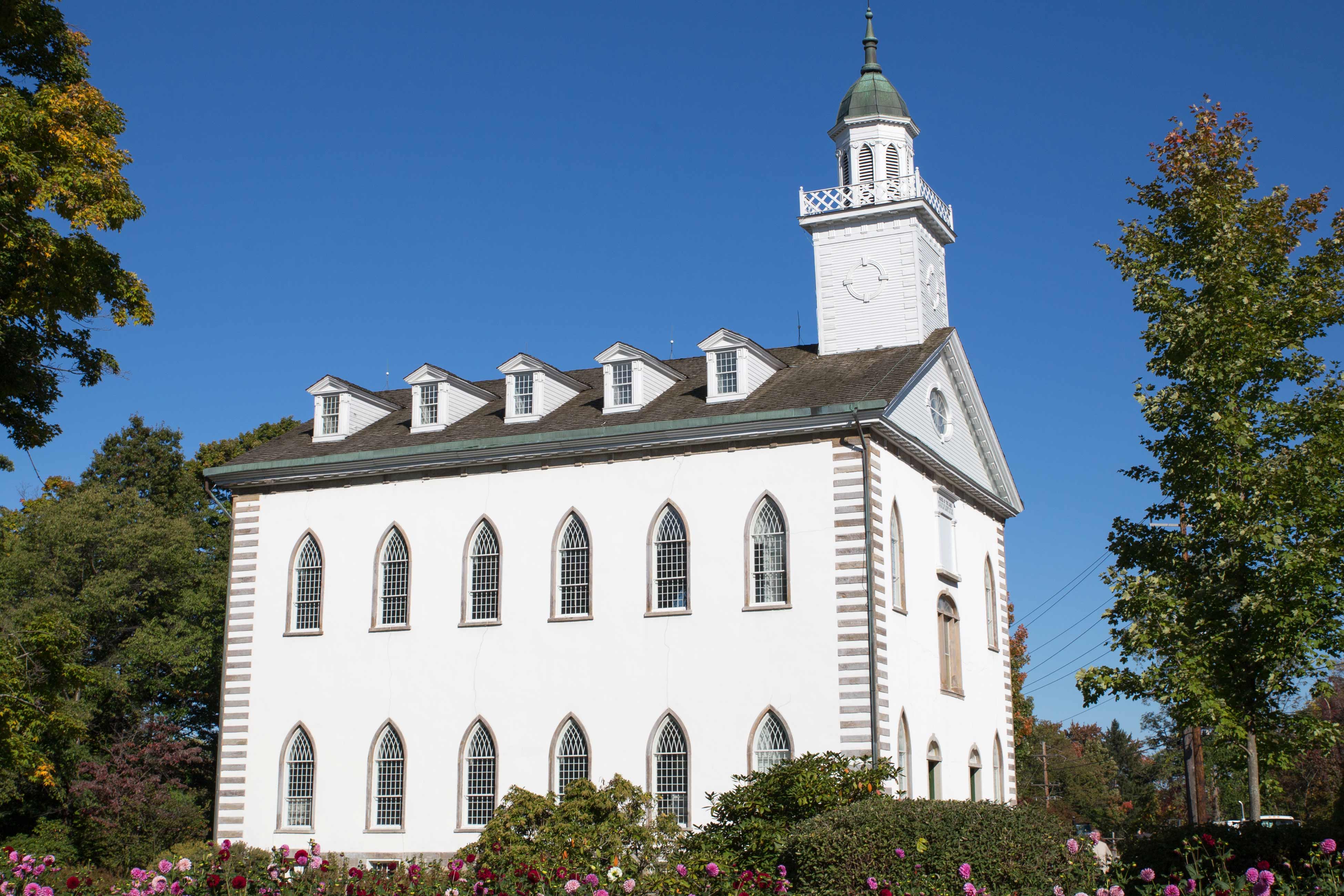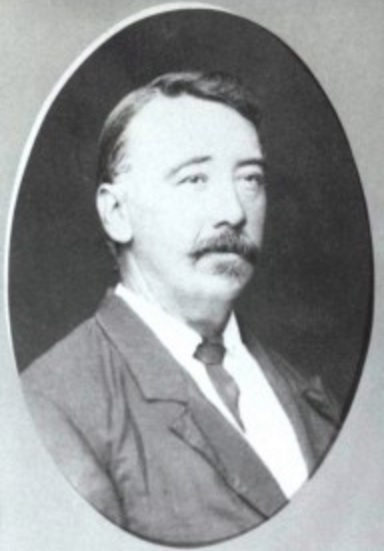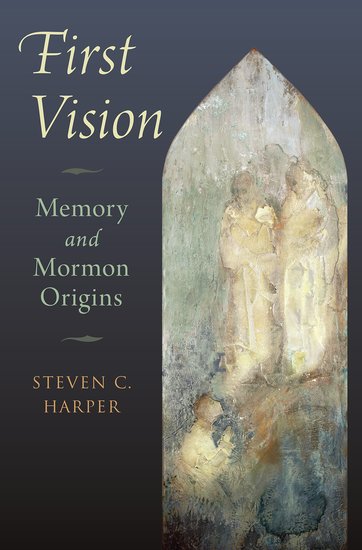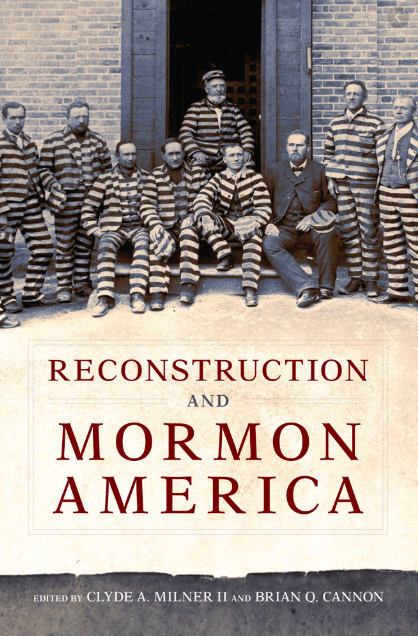$10 Virtual Tour of the Kirtland Temple
By June 5, 2020
Don’t overthink this. Spend $10. Help keep the temple open to the public. Learn a lot. Give more if you can.
https://www.kirtlandtemple.org/onlinetour

By June 5, 2020
Don’t overthink this. Spend $10. Help keep the temple open to the public. Learn a lot. Give more if you can.
https://www.kirtlandtemple.org/onlinetour

By June 3, 2020
My mom has been reading Saints, volume 2. And as we are wont, she called me with a fun fact. She had read that Wilford Woodruff was the first person to wear white clothing to officiate in at the temple [n1]. I responded that indeed, not only that but it was a suit made of deer skin. My mom was somewhat incredulous.
By June 1, 2020
I found this in the Journal of Charles L. Walker. I hope that others will point me to Latter-day Saint songs we haven’t heard before.

JOURNAL: St. George–June 1st. Dry and warm. Went with the choir to Pres. Young’s house to pay our respects on this anniverary of his birthday. The choir sand a song on teh north porch and were then invited into the hall and theer sang several songs appropriate to the occasion. The following one I composed for the choir, who did credit to it by the animated style in which they sang.
By May 29, 2020
Friend of JI Matt Grow passed this on to us. Dr. Grow is the President of the Communal Studies Association for 2020. Here is a LINK to the original.

Dear Communal Studies Association Members,
The CSA board met this past week to consider how best to hold a conference this fall. Given the uncertain situation with the COVID-19 pandemic—including the potential health challenges of traveling and meeting together, as well as budget cuts and travel restrictions at many institutions—we decided that it would be best to hold a “virtual” conference. Our conference will occur on the same dates, October 1-3, and have the same theme, “Foundations and Futures.” But rather than meet at the Historic Ephrata Cloister in Pennsylvania, we will meet on-line to hear the latest scholarship and perspectives in the field of communal studies.
By May 21, 2020
Members of the Mormon History Association received an email in the past few days about the digital conference the organization will offer from June 6-12, 2020 (some presentations will be on the website for longer). There is no registration cost for MHA members; MHA membership is the only requirement for participation. You will receive a password to log in to mormonhistoryassociation.org to view the programming.
As conference co-chairs, Anne Berryhill and I have been blown away by how many people are anxious to help MHA put together programming for a digital conference. Teamwork, truly, makes the dream work. You can see the organization’s email HERE (LINK). The program is also available at the bottom of this post.
The only cost for the 2020 conference is membership in MHA. Digital membership is only $40, and student memberships are only $35, though if you’re like me, you’d prefer to have a physical copy of the journal ($70). You can join HERE. Here are two reasons you should join MHA for 2020 (and beyond!):
Frankly, these are tough economic times. I know that and live that, and the academic job markets I’m entering this fall bear witness to this reality. My $70 is fair and reasonable for access to the Journal of Mormon History and membership in MHA. It’s also my small way of saying, “I want MHA and Mormon history to survive and thrive.” If you’ve let your membership lapse, this would be a great time to re-join. Friends at first are friends again at last, etc.
Please renew your commitment to the academic study of Mormon history. Or, if you prefer, Latter-day Saint and Mormon history. I am an academic because of the skills I learned researching Mormonism and presenting at MHA. Every student, scholar, and consumer of Mormon history deserves the same opportunity that I and hundreds of others have had because of their participation in MHA.
If MHA 2020 goes well as a digital conference, it gives the organization the go-ahead to think about how we can have digital offerings at every conference. For those who face adverse health conditions, have economic constraints, or other reasons they cannot travel, this provides an option to participate online.
You may think to yourself, “I attend MHA every year, what does it matter to me if there are online offerings?”
I don’t think that digital programming will never replace face-to-face meetings. But, frankly, MHA members like me can examine our good fortune that institutions sponsor our travel or that we can find odd jobs to pay for travel, find friends to lodge with and scrimp to be able to pay for meals at conferences. Money, far too often, keeps people from participating at MHA. Digital programming allows more people to participate. More participation means more and better scholarship.
If we aren’t accessible to our membership and can’t allow folks who don’t have institutional affiliations or independent wealth to participate in MHA, then MHA will actively suffer for it. YOU can make a difference in making things better for all the many scholars and enthusiasts MHA hopes to reach by joining MHA. As an academic non-profit, digital options must make financial sense. If more folks join, the 2021 co-chairs can go to the Board and ask for the flexibility and funds to provide more content for MHA’s members.
So please. Join now. Support the academic study of Mormon history. Help MHA make history by pulling off a digital conference that is economically viable.
By May 17, 2020
This year members of The Church of Jesus Christ of Latter-day Saints commemorate the 200th anniversary of the First Vision. Such community awareness surrounding the date and religious meaning of that founding visionary event has been historicized by the recent publication of Steven C. Harper: First Vision: Memory and Mormon Origins. Oxford University Press (2019).

By May 16, 2020
There were always a million things going on in the life of Mormonism’s founding prophet. But when Joseph Smith had time and secretaries, he set himself to work in matters from the mundane to the metaphysical. That’s certainly the case for the period from May-August 1842 (Joseph Smith Papers Documents, Volume 10, or D10), as he “introduced new religious rituals, directed missionary work, and struggled to organize resources for the hundreds of converts from the United States and England who continued to gather to Nauvoo, Illinois.”[i] Ranging from letters, newspaper selections, financial documents, revelations, and even Nauvoo city scrip (currency), D10’s editors have provided a marvelous set of 105 records for scholars to understand Smith’s chaotic life better.

By May 13, 2020
Church History Consultant Assistant (Contract Employee)
By May 9, 2020
This morning while scrolling through Yahoo’s newsfeed I came across the article “What Jesus Really Said About Heaven and Hell,” a blurb from Bart Ehrman’s new book Heaven and Hell: A History of the Afterlife. In the burb, Ehrman argues that the the popular notion notion among Christians of heaven and hell is wrong because Jesus and the Jews didn’t teach it. Instead, Ehrman argues, Jesus taught that the wicked would be totally destroyed while the righteous would be resurrected and live on earth. But Jesus and the Jews did not believe in a soul that that could live apart from the body. That was a Greek idea.
I leave aside the legitimacy of Ehrman’s argument–not surprisingly, a whole lot of people took exception in the comments–and I’ll only note that Ehrman’s idea was argued by a number of Anabaptist and other radicals in the early modern period (called psychopannychism, mortalism, or soul sleep, see N. T. Burns, Christian Mortalism from Tyldale to Milton [1972]). It’s currently taught by Jehovah’s Witnesses.
By May 8, 2020
Brian Q. Cannon and Clyde A. Milner II, eds., Reconstruction and Mormon America (University of Oklahoma Press, 2019).

In his 2002 presidential address for the Western History Association, Elliot West argued that American historians needed to think more broadly and holistically when considering race in the nineteenth century. The conflict between North and South over slavery that led to the Civil War was not the only problem surrounding race that vexed D.C. politicians. He writes:
At the moment we took the most dramatic step in our history toward racial justice, freeing one nonwhite people from slavery, we were gathering up skulls of another, and doing it on the premise that this nation was composed of starkly defined races that learned men could tabulate into an obvious hierarchy from best to worst. (1)
Six years later, West explained this further by arguing for what he called a “Greater Reconstruction” that spanned from the annexation of Texas in 1845 to the United States defeat of the Nez Percein 1877. (2) During this period, the United States government tried to assert power over two separate and simultaneous processes: successionist claims of the South over the institution of slavery and westward expansion in spite of the host of sovereign people occupying those lands. Greater Reconstruction thus implies both the expansion of federal power and the ways it strove to incorporate and exclude racial and religious others from citizenship. West argues that Reconstruction is best understood under a broader frame that incorporates federal actions in the West as well as the South.
Mormon Reconstruction takes West’s claims and tests them against the historical experiences of Mormons in the West during the nineteenth century. In doing so, this slate of well-accomplished scholars – in both Mormon history and Western history – tests Reconstruction in the West more generally to see how the idea of Greater Reconstruction works on the Mormon case. The essays in the edited collection come from the contributions and discussion from a 2017 seminar held at the Charles Redd Center for Western Studies at Brigham Young University.
The most compelling chapters of the bookare the ones that explicitly define (and problematize) the relationship between Mormonism and Reconstruction. Patrick Mason, for example, questions whether the term Reconstruction can be applied to a religious culture still in construction. Rachel St John builds on Mason’s critique of Mormon (re)construction and argues that the term loses its meaning when used to expansively cover both the South and the West. Reconstruction in the South occurred in the aftermath of the Civil War and the 13th, 14th, and 15th amendments. It was a rebuilding effort for a nation fractured over slavery. In the West, however, the federal government was still working to establish its authority. The federal government was still building its presence in the West as it was Reconstructing its presence in the South.
Elliot West and Rachel St John offer divergent methods. West urges historians to consider Reconstruction as a national project that took different forms in the West and the South; only then, he says, can we understand the contradictory relationships the state created as its power grew over the course of the nineteenth century. St John, by contrast, wants historians to get specific about what Reconstruction is. Does Greater Reconstruction entail a particular kind of state building and population control? Have we stretched Reconstruction’s time period so far that its boundaries no longer have a distinct meaning? Answering these questions, St John argues, shows that the connections between the history of the West and the South become “both too historically specific and insufficiently broad to encompass the diverse and far-reaching processes of state formation, nation building, colonization, and subordination of racial and minority groups that shaped North America in the nineteenth century.” (188)
If specificity is the goal, applying Mormon history to the already nebulous term of Greater Reconstruction creates another problem. What period of nineteenth century Mormon history merits the term Reconstruction? Authors of the volume seem undecided on this question. Angela Pulley Hudson engages with the idea of Mormon expulsion in the 1830s and 40s as potentially part of the Reconstruction experience. The majority of the authors focus on the Utah War in the late 1850s as the main period of Mormon Reconstruction. Meanwhile, I was surprised to find little explicit discussion of the 1880s when the federal government cracked down on the enforcing laws criminalizing polygamy (a period that legal historian Sarah Barringer Gordon called “Second Reconstruction”). (3) This multiplicity of moments in Mormon history (spanning fifty years) represents a whole array of interactions with the federal government. During these fifty years both the federal government and Mormonism as a movement changed and grew immensely. What does it mean then to speak collectively about a Mormon Reconstruction that references all these different moments?
What this book does best is model how historians of different backgrounds can come together disagree on a concept in a productive way. The diversity of the chapters give us a sense of the spirited debate that Brian Q. Cannon and Clyde A. Milner II fostered during their symposium. The idea of Reconstruction and Mormonism’s place inside it is never taken for granted in this book but something that authors can discuss, expand upon, and question.
(1) Elliott West, “Reconstructing Race,” Western Historical Quarterly 34, no. 1 (February 1, 2003): 20.
(2) Elliott West, The Last Indian War the Nez Perce Story, Pivotal Moments in American History (Oxford ; New York: Oxford University Press, 2009).
(3) Sarah Barringer Gordon, The Mormon Question: Polygamy and Constitutional Conflict in Nineteenth-Century America (Chapel Hill, NC: University of North Carolina Press, 2002) 144.
The lack of discussion of the 1880s is a lost opportunity for the authors of this book, for a few reasons. Firstly, Mormons explicitly saw the conflict between them and the federal government through the lens of Reconstruction politics. They referred to federal agents as carpetbaggers and created political ties with Southern politicians based on a shared sympathy from this experience. Additionally, the raids of the 1880s (and 1890s) represent an opportunity to broaden the Mormon element of Reconstruction beyond just Utah. The mass imprisonment of Mormon men occurred not just in Utah but also in Arizona, Idaho, Nevada, and Wyoming.
© 2025 – Juvenile Instructor
Recent Comments
Steve Fleming on BH Roberts on Plato: “Interesting, Jack. But just to reiterate, I think JS saw the SUPPRESSION of Platonic ideas as creating the loss of truth and not the addition.…”
Jack on BH Roberts on Plato: “Thanks for your insights--you've really got me thinking. I can't get away from the notion that the formation of the Great and Abominable church was an…”
Steve Fleming on BH Roberts on Plato: “In the intro to DC 76 in JS's 1838 history, JS said, "From sundry revelations which had been received, it was apparent that many important…”
Jack on BH Roberts on Plato: “"I’ve argued that God’s corporality isn’t that clear in the NT, so it seems to me that asserting that claims of God’s immateriality happened AFTER…”
Steve Fleming on Study and Faith, 5:: “The burden of proof is on the claim of there BEING Nephites. From a scholarly point of view, the burden of proof is on the…”
Eric on Study and Faith, 5:: “But that's not what I was saying about the nature of evidence of an unknown civilization. I am talking about linguistics, not ruins. …”